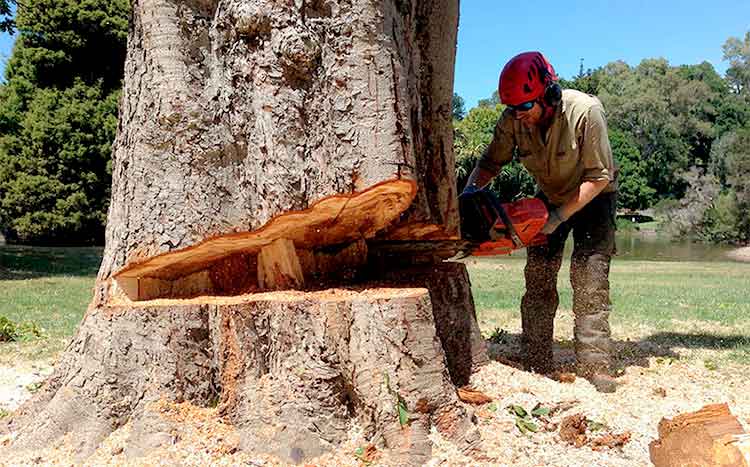As a homeowner or property investor, the decision to remove a tree can be a costly yet necessary endeavor. With the potential expenses involved, it’s natural to wonder if this significant investment can be deducted from your taxes. While the answer may not be straightforward, understanding the nuances of tax deductibility for tree removal can help you maximize your savings and make informed decisions.
The Importance of Tree Removal
Trees are undoubtedly valuable assets, providing shade, beauty, and environmental benefits. However, there are instances when removing a tree becomes essential for safety reasons or to prevent potential damage to your property. Some common situations that may necessitate tree removal include:
- Diseased or dying trees that pose a risk of falling and causing harm to people or structures
- Trees with invasive root systems that are damaging foundations, plumbing, or other utilities
- Trees that have been severely damaged by storms, hurricanes, or other natural disasters
- Trees obstructing construction or renovation projects
Regardless of the reason, tree removal can be a significant expense, often ranging from hundreds to thousands of dollars, depending on the size and complexity of the job. This is where understanding the potential tax deductions can provide some financial relief.
Deductibility for Commercial Properties
According to the IRS and multiple trusted sources, tree removal expenses are generally tax-deductible for commercial properties, such as rental homes or business premises. The key factor is the reason for the removal. If the tree poses a safety hazard or is causing damage to the property, the removal cost can be deducted as a maintenance or repair expense.
For instance, if a tree’s roots are compromising the structural integrity of a rental property’s foundation or plumbing system, the cost of removing the tree can be written off as a necessary repair. Similarly, if a diseased tree threatens the safety of tenants or customers, its removal can qualify as a deductible expense.
It’s important to note that tree removal expenses related to land clearing or property improvements may be treated differently. In such cases, the cost may be considered a capital improvement and subject to different tax treatment, potentially requiring depreciation over several years.
Residential Properties and Federally Declared Disasters
For homeowners, the deductibility of tree removal expenses is generally more limited. However, there are specific circumstances where these costs may be eligible for tax deductions:
-
Federally Declared Disasters: If your property is located in an area affected by a federally declared disaster, such as a hurricane, tornado, or wildfire, the cost of removing trees damaged by the disaster may be deductible as a casualty loss. This deduction is subject to certain limitations and requirements, so it’s essential to consult with a tax professional.
-
Safety and Damage Prevention: In some cases, if a tree poses an immediate threat to the safety of your home or its occupants, or if its removal is necessary to prevent further damage to the property, the expenses may be deductible as a casualty loss or a home maintenance expense. However, the requirements for these deductions can be stringent, and you’ll need to provide supporting documentation.
It’s crucial to note that for residential properties, the tree removal expenses must be directly related to preventing or mitigating damage or addressing safety concerns. Purely aesthetic reasons, such as removing a tree to improve the view or enhance curb appeal, are generally not considered deductible expenses.
Hiring a Professional Tree Removal Company
To qualify for potential tax deductions, it’s essential to hire a professional tree removal company. DIY tree removal efforts are not only dangerous but also fail to meet the requirements for deductibility. Professional tree removal services possess the necessary expertise, equipment, and safety protocols to ensure the job is done correctly and efficiently.
When hiring a tree removal company, be sure to obtain detailed invoices and documentation outlining the scope of work, the reason for removal, and the associated costs. This documentation will be invaluable when substantiating your deductions during tax filing.
Consult a Tax Professional
While this guide provides an overview of the potential tax deductibility of tree removal expenses, it’s crucial to consult with a qualified tax professional. Tax laws and regulations can be complex and subject to frequent changes, and a professional can ensure you comply with all applicable rules and maximize your deductions.
A tax professional can evaluate your specific situation, review the necessary documentation, and provide personalized advice on whether your tree removal expenses qualify for deductions. They can also guide you through the proper filing procedures and help you avoid any potential penalties or audits.
Conclusion
By understanding the nuances of tax deductibility for tree removal and seeking professional guidance, you can make informed decisions and potentially recoup a portion of your expenses. Remember, proper documentation and compliance with tax regulations are essential to maximizing your savings and avoiding any potential issues with the IRS.
Tree trimming company charges woman $8,000 for two trees
FAQ
Is tree removal a capital improvement IRS?
Can you claim damaged or downed trees as a tax deduction?
Are land clearing costs deductible?
Is fence repair tax-deductible?

